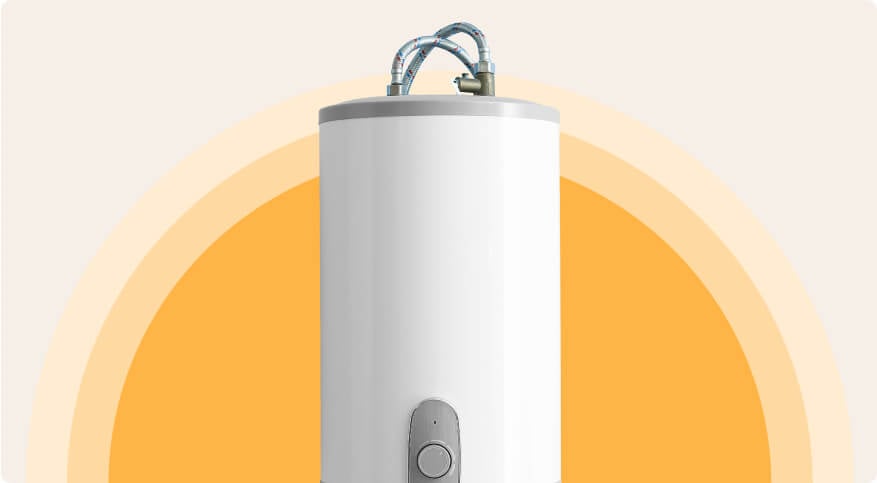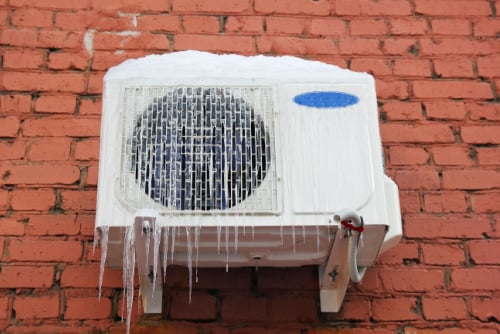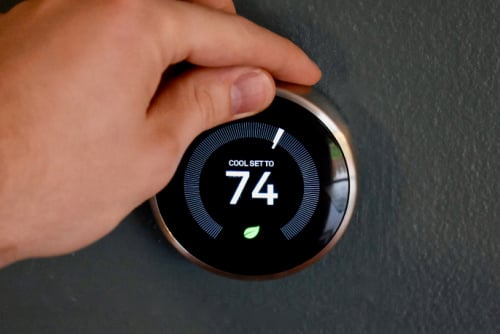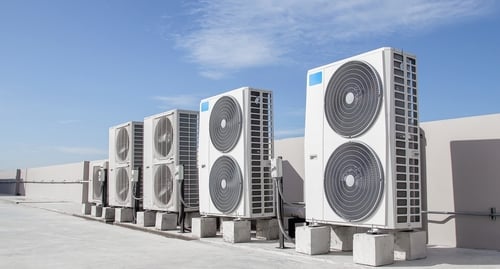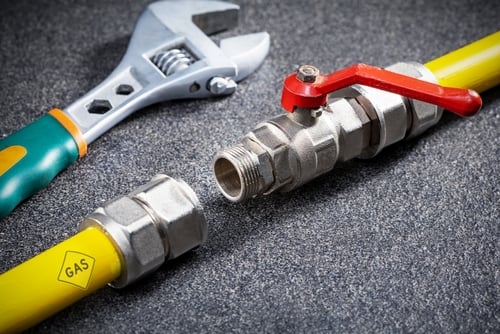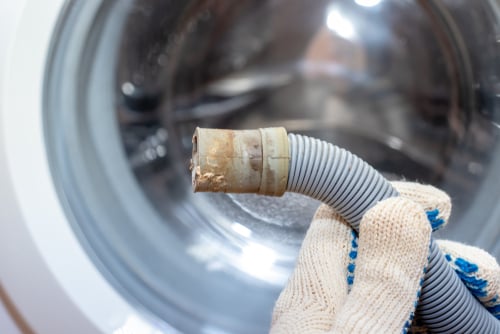Warm showers on a chilly morning, clean dishes after a family dinner, and cozy, heated rooms during winter months all share a common hero: your home's hot water system. But, like all core components of your household, it too needs care and attention.
Keeping up with maintenance keeps your system going
Regular maintenance not only ensures a constant supply of hot water but also extends the life of your heater, preventing sediment build-up and corrosion, and ultimately saving you time and money.
With this guide handy, you'll be equipped with the knowledge to perform routine checks and basic maintenance on your hot water heater. And remember, if you ever need a bit more help, Frontdoor's video chat feature connects you instantly with an Expert ready to assist.
Understanding your home’s hot water system
At the core of your home's hot water system is the water heater. This vital appliance ensures that hot water is always available when you turn on the tap, whether you're doing the dishes, taking a shower, or cleaning the house. There are primarily two types of water heaters:
- Tank Water Heaters: These are the most common types and store a large volume of hot water, ready for use. They continuously heat the water to maintain a set temperature, ensuring that hot water is available whenever you need it.
- Tankless Water Heaters: Also known as on-demand water heaters, these units heat water directly without the use of a storage tank. When a hot water tap is turned on, cold water travels through a pipe into the unit, where it's heated by either a gas burner or an electric element.
- Solar Water Heaters: Utilizing solar panels, these systems convert sunlight into heat for water heating. The heated fluid circulates through the system into a storage tank, providing eco-friendly hot water whenever needed. These systems are especially beneficial in sunny climates for reduced energy costs and carbon emissions.
All types of water heaters have their unique advantages and maintenance needs. Understanding which type you have is the first step in maintaining your system effectively.
Signs your water heater needs maintenance
Regular maintenance of your hot water heater can prevent a multitude of problems. But how often should you check it, and what are the signs that it needs some attention?
Ideally, you should inspect your hot water heater at least once a year. This includes checking for leaks, examining the pressure relief valve, and water heater cleaning such as flushing the tank to remove sediment build-up.
Throughout the year, be on the lookout for the following symptoms:
- Inconsistent water temperatures.
- Reduced hot water supply.
- Rumbling or banging noises from the tank.
- Cloudy or discolored water.
- Presence of water around the base of the heater.
- Bad odors: odor is a sign of a bad anode rod.
Recognizing these signs early can prevent more significant issues down the line, ensuring that your hot water system continues to function efficiently and effectively.
Maintaining your hot water heater
Whether you're dealing with a traditional tank model or a tankless system, the following steps will help you maintain your hot water heater's performance and prevent common issues.
Before you start, ensure you have these tools and materials on hand. Safety is paramount, so wear gloves and eyewear to protect yourself from hot water and debris.
Tools & Materials:
Garden hose, Bucket (for capturing water), Gloves (to protect your hands), Flathead screwdriver (if applicable), Protective eyewear
Preparing your water heater for maintenance
Begin by addressing the power source: if you have an electric water heater, locate your home's circuit breaker and switch off the power to the heater. For those with gas water heaters, adjust the thermostat to the "pilot" position or turn off the gas supply completely.
Next, you'll need to halt the water supply to the heater. Find the cold water valve, which is typically situated near the top of the unit, and twist it to the "off" position to stop water from flowing into the tank.
It's important to allow your water heater to cool down before you start working on it. Hot water within the system can cause burns, so giving the tank several hours to cool is essential for your safety.
How to drain and flush a water heater
Knowing how to drain a water heater and how to flush a water heater are key steps in keeping your system running smoothly.
- Connect a Garden Hose: attach a garden hose to the drain valve located at the bottom of your water heater. Lead the other end of the hose to a drain or outside where it can safely dispense water.
- Open the Pressure Relief Valve: this step is crucial for safety and to prevent a vacuum from forming in the system. Open the valve carefully, as hot water or steam may escape.
- Drain the Tank: open the drain valve where you've connected the hose. Allow the water to flow until it stops. This process removes sediment that has settled at the bottom of the tank.
- Flush the Tank: after the tank has emptied, turn on the cold water valve to the water heater to flush out any remaining sediment. Keep the drain valve open and let the water run until it appears clear through the hose.
- Close Valves and Refill: once the water runs clear, close the drain valve and remove the garden hose. Make sure the pressure relief valve is also closed. Turn on the cold water supply to refill the tank.
Refill and restart
The next steps involve refilling and restarting the unit. Start by ensuring that all valves, specifically the drain valve and pressure relief valve, are tightly closed to prevent any leaks during operation. Then, proceed to reactivate the water supply by turning the cold water valve back to the "on" position, which will begin the process of refilling the tank.

Expert Tips
from Frontdoor Plumbing Expert Charles Pound
If you stumble upon maintenance issues, remember that Frontdoor is here to assist. A quick video chat with one of our Plumbing Experts can provide immediate guidance and peace of mind.
After confirming the tank is full, it's time to restore power to your water heater. If you have an electric heater, switch the power back on at the circuit breaker. For those with gas water heaters, turn the gas supply back on and, if necessary, relight the pilot light following the manufacturer's guidelines. Be sure to remove all air from the heater and water lines by opening the hot side of a faucet in the furthest fixture from the heater, until all air is out and water is running steady.
Ensuring your hot water is here to stay
Maintaining your hot water heater is essential for keeping it working for years to come. By regularly inspecting and performing basic maintenance tasks like draining, flushing, and refilling the tank, you can prevent sediment build-up, corrosion, and other issues that may affect its efficiency. Whether you have a traditional tank water heater or a tankless system, following these steps will help you keep your hot water system running smoothly, providing you with reliable hot water whenever you need it.
Get help from a Frontdoor Expert
Don't let water heater worries leave you in the cold. Download the Frontdoor app today, and gain instant access to our library of How-to Tips along with a national network of qualified and trusted Pros. Whether you prefer the DIY route with our Expert-backed guidance or need to schedule an in-person visit, we're here to ensure you stay comfy and cozy in your home.
Feeling drained by your water heater issues?
Download the Fromtdoor app and video chat an Expert

Was this article helpful?

